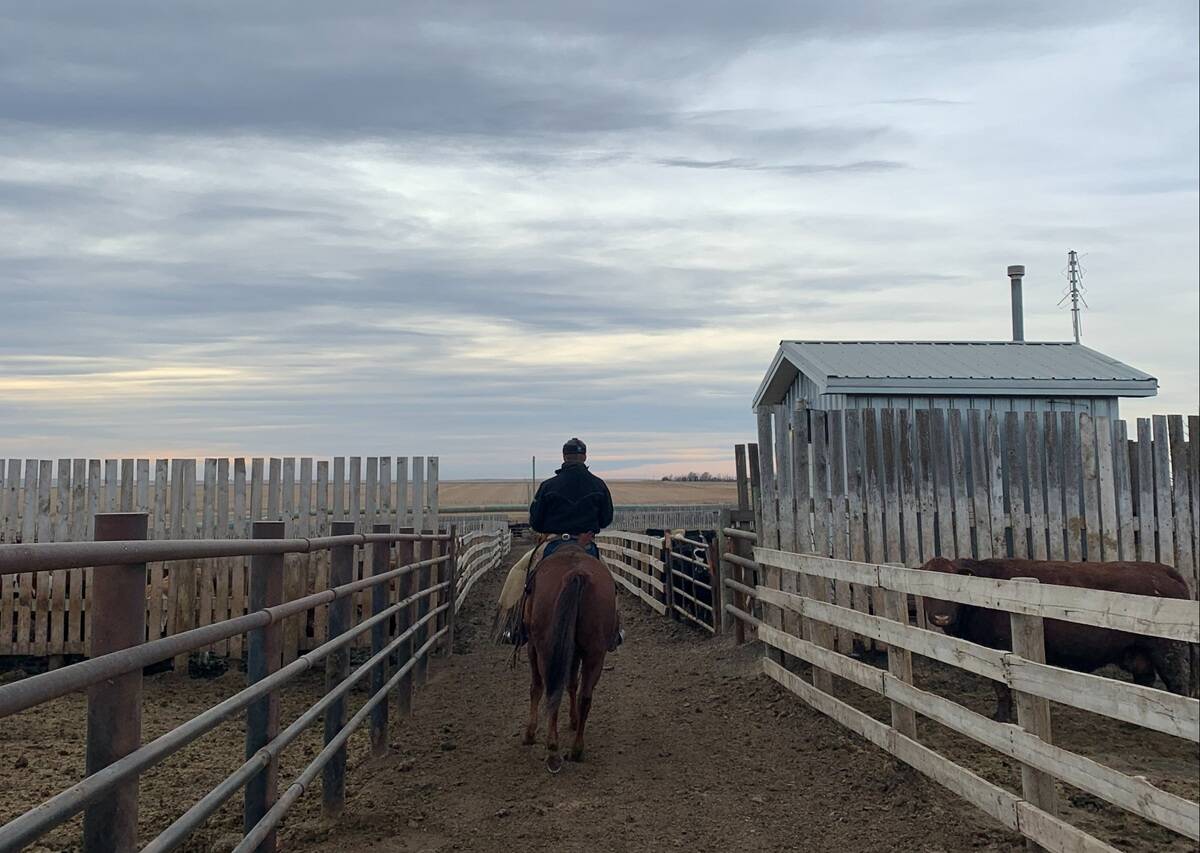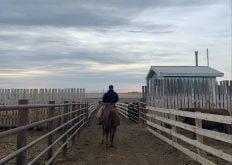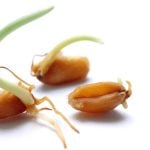Some people see a weedy pasture as the sign of poor management. Kathy Voth sees it as a sign that someone still needs to teach their cattle to eat weeds.
“It’s all forage,” says the former Bureau of Land Management employee who has developed a proven method of teaching cattle how to enjoy eating weeds as part of a varied diet on pasture.
In effect, she turns cattle into tools for cleaning up pastures.
She originally started working with goats to reduce brush and fire loads on public lands but was never very successful at spreading this idea to area ranchers. “It reached the point where I thought, you know I think it would be easier to teach cows to eat weeds than it would be to teach ranchers to raise goats. And I was right,” she says.
Read Also

Pen riders still better than tech at detecting respiratory disease in feedlot cattle, says researcher
Recent research found that pen riders are better than tech at flagging signs of BRD in feedlot cattle
Her four step method is based on animal behaviour research.
Step one is to learn about the toxicity and nutritional value of the weed you are going after. Scientists at Utah State University discovered animals choose what to eat based partly on feedback from the rumen about nutrients and toxins in foods. So palatability isn’t all in the mouth. The more nutritious a weed is the more likely an animal will eat it. Fortunately some of the more troublesome weeds she has managed to teach cattle to eat, like leafy spurge, diffuse knapweed and Canada thistle, are as nutritious as alfalfa.
All plants contain toxins but cattle will naturally avoid something that makes them sick if they have plenty of other forages to choose from. However, Voth would never turn cattle into a paddock with a solid stand of the target weed. Given plenty of choice the cattle seem to safely sort out what they can and can’t eat. Where she can she avoids highly toxic plants but in some cases you just have to trust the cattle to sort them out.
Step two, choose the animals you want to train. She prefers young replacement heifers at a year to 18 months of age. They are naturally curious and inexperienced so more willing to try new things. And they will pass on this new knowledge to their offspring. Voth saw this happen in 2007 when she trained 12 females to eat Italian thistle on pasture. Soon all 120 pairs were eating the weed.
“It’s incredibly important that you start with healthy animals,” she adds. You never want to starve an animal into eating a strange plant. That makes no economic sense, plus they need to be in a good nutritional state to deal with any toxins in the diet.
Voth prefers small training groups but she has successfully trained 110 pairs at on one large ranch operation.
She’d also rather work with tame cows. “But I’ve worked with as many wild ones as tame ones and it all comes down to the same thing, we build the relationship by bringing them something.”
Step three, build on what animals choose to eat. She’s trained groups in as little as five days but 10 days is normal. Using a training pen to start, she offering ‘trainees” a series of new feeds like ground alfalfa, bran, small amounts of barley or rolled grain at the same time, twice a day, for four days. The idea is to set up a routine and give them a good experience whenever they try something new.
She likes to use small feeding tubs. At first she put out one tub per animal in the pen but later found it was better to create a little competition by limiting the number of tubs so they wouldn’t be quite so picky about what they ate.
Don’t worry if they don’t clean up the tubs right away. With new feeds they often have to take a small amount in the first few visits to the tub. Once one sticks her head in the rest usually follow quite quickly.
By the fifth day they are ready to try a small handful of the target weed tossed on top of the other feeds. For the rest of the time it’s just weeds in small amounts.
In the beginning she thought she had to sweeten up the weeds with a dilute solution of water and molasses. She’s since found cattle adapt to the weeds just fine without the sweetener.
Step four, give the cattle some practice in a small pasture containing a mixture of the target weed and grass. You want a pasture just large enough to create a little pressure so they don’t automatically fall back into picking out the grass from the weeds.
In the beginning they may only nip off the tops of the weeds, but in time they usually figure out how to fit this new forage into the diet. Trained cows are often quite willing to try other new things. She’s seen them graze weeds in tall grass and go after the leaves on willows.
So far, she’s never had any reports or seen any evidence or sore mouths or ill effects from cattle eating Canada thistle, leafy spurge, diffuse knapweed or any other weed found on the ranches where she’s trained cattle.
You can pressure weed populations with cattle but it would take a pretty concerted effort to eradicate a weed by grazing. Seeds are carried in the manure and if that is a worry it is best to graze stands before they set seeds. Of course, if you consider weeds a forage then some weed spread isn’t a concern as long as it only maintains current populations.
If weeds flavour beef, she hasn’t heard any reports of it happening. In any event, most of the ranches she has worked with finished their cattle in feedlots so any influence of weeds would be long gone before the meat was harvested.
Voth conducts training sessions and has training packages and videos available through her website at www.livestockforlandscapes.com.
















